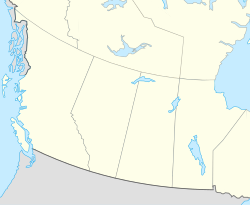 Vancouver (Listeni/væŋˈkuːvər/ or /vænˈkuːvər/) officially the City of Vancouver, is a coastal seaport city on the mainland of British Columbia, Canada. The 2011 census recorded 603,502 people in the city, making it the eighth largest Canadian municipality.[1] The Greater Vancouver area of around 2.4 million inhabitants is the third most populous metropolitan area in the country[1] and the most populous in Western Canada. Vancouver is one of the most ethnically and linguistically diverse cities in Canada; 52% of its residents have a first language other than English.[4][5] Vancouver is classed as a Beta global city. The City of Vancouver encompasses a land area of about 114 square kilometres, giving it a population density of about 5,249 people per square kilometre (13,590 per square mile). Vancouver is the most densely populated Canadian municipality, and the fourth most densely populated city over 250,000 residents in North America, behind New York City, San Francisco,[6] and Mexico City.
Vancouver (Listeni/væŋˈkuːvər/ or /vænˈkuːvər/) officially the City of Vancouver, is a coastal seaport city on the mainland of British Columbia, Canada. The 2011 census recorded 603,502 people in the city, making it the eighth largest Canadian municipality.[1] The Greater Vancouver area of around 2.4 million inhabitants is the third most populous metropolitan area in the country[1] and the most populous in Western Canada. Vancouver is one of the most ethnically and linguistically diverse cities in Canada; 52% of its residents have a first language other than English.[4][5] Vancouver is classed as a Beta global city. The City of Vancouver encompasses a land area of about 114 square kilometres, giving it a population density of about 5,249 people per square kilometre (13,590 per square mile). Vancouver is the most densely populated Canadian municipality, and the fourth most densely populated city over 250,000 residents in North America, behind New York City, San Francisco,[6] and Mexico City.
maps are also distinct for the global knowledge required to construct them. A meaningful map of the world could not be constructed before the European Renaissance because less than half of the earth's coastlines, let alone its interior regions, were known to any culture. New knowledge of the earth's surface has been accumulating ever since and continues to this day. Maps of the world generally focus either on political features or on physical features. Political maps emphasize territorial boundaries and human settlement. Physical maps show geographic features such as mountains, soil type or land use. Geological maps show not only the surface, but characteristics of the underlying rock, fault lines, and subsurface structures. Choropleth maps use color hue and intensity to contrast differences between regions, such as demographic or economic statistics.
Tuesday, August 4, 2015
Vancouver Map
2:20 PM
Maps
 Vancouver (Listeni/væŋˈkuːvər/ or /vænˈkuːvər/) officially the City of Vancouver, is a coastal seaport city on the mainland of British Columbia, Canada. The 2011 census recorded 603,502 people in the city, making it the eighth largest Canadian municipality.[1] The Greater Vancouver area of around 2.4 million inhabitants is the third most populous metropolitan area in the country[1] and the most populous in Western Canada. Vancouver is one of the most ethnically and linguistically diverse cities in Canada; 52% of its residents have a first language other than English.[4][5] Vancouver is classed as a Beta global city. The City of Vancouver encompasses a land area of about 114 square kilometres, giving it a population density of about 5,249 people per square kilometre (13,590 per square mile). Vancouver is the most densely populated Canadian municipality, and the fourth most densely populated city over 250,000 residents in North America, behind New York City, San Francisco,[6] and Mexico City.
Vancouver (Listeni/væŋˈkuːvər/ or /vænˈkuːvər/) officially the City of Vancouver, is a coastal seaport city on the mainland of British Columbia, Canada. The 2011 census recorded 603,502 people in the city, making it the eighth largest Canadian municipality.[1] The Greater Vancouver area of around 2.4 million inhabitants is the third most populous metropolitan area in the country[1] and the most populous in Western Canada. Vancouver is one of the most ethnically and linguistically diverse cities in Canada; 52% of its residents have a first language other than English.[4][5] Vancouver is classed as a Beta global city. The City of Vancouver encompasses a land area of about 114 square kilometres, giving it a population density of about 5,249 people per square kilometre (13,590 per square mile). Vancouver is the most densely populated Canadian municipality, and the fourth most densely populated city over 250,000 residents in North America, behind New York City, San Francisco,[6] and Mexico City.




